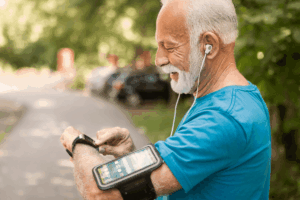
1. Introduction
During Advanced Cardiac Life Support (ACLS), pulseless electrical activity (PEA) is a challenging cardiac arrest rhythm that frequently occurs. The heart does not produce a pulse, despite showing organized electrical activity on the monitor. Proper identification and rapid intervention using the ACLS PEA algorithm can significantly influence patient outcomes. This guide will walk you through recognizing PEA, the ACLS protocol, medications involved, and the critical “Hs and Ts” that underlie its cause.
2. What Is Pulseless Electrical Activity (PEA)?
Pulseless electrical activity (PEA) is a condition characterized by a visible, structured cardiac rhythm that does not produce a pulse. The electrical system of the heart is functioning, but the mechanical pumping action is not. Unlike other rhythms, such as ventricular fibrillation or pulseless ventricular tachycardia, PEA is not shockable and requires immediate high-quality CPR and targeted treatment for reversible causes.
3. Recognizing PEA During a Code
PEA is detected when the cardiac monitor shows a rhythm (bradycardia, sinus rhythm, or other organized rhythm) but there is no palpable pulse in a cardiac arrest situation. This diagnosis is made by checking for pulselessness in the presence of electrical activity. It is crucial to check for pulselessness rather than relying solely on the monitor.
4. ACLS Protocol for PEA
When PEA is diagnosed, the ACLS PEA method helps healthcare providers respond:
- Start high-quality CPR immediately (30:2 if no advanced airway, continuous compressions).
- Administer 1 mg epinephrine IV/IO every 3 to 5 minutes.
- Check rhythm and pulse every 2 minutes during CPR.
- Determine and treat reversible causes (the Hs and Ts).
- Do not defibrillate PEA, it is not a shockable rhythm.
Time is important. Early administration of epinephrine and correction of the underlying causes are essential to improve outcomes.
5. Medications Used in PEA
The primary PEA medication in ACLS is epinephrine:
- Epinephrine: 1 mg IV/IO for every 3 to 5 minutes. It increases peripheral vasoconstriction and improves coronary perfusion pressure, helping to restore a perfusing rhythm.
No other medications are routinely recommended during initial PEA management, unless a reversible cause necessitates their use, such as sodium bicarbonate for acidosis or calcium for hyperkalemia.
6. The Hs and Ts
PEA often results from reversible conditions. The ACLS method uses these Hs and Ts as the key to successful resuscitation:
The 5 Hs:
- Hypovolemia
- Hypoxia
- Hydrogen ion (acidosis)
- Hypo-/hyperkalemia
- Hypothermia
The 5 Ts:
- Tension pneumothorax
- Tamponade (cardiac)
- Toxins
- Thrombosis (pulmonary or coronary)
- Trauma
Want a deeper dive into each cause?
Read our full guide on the Hs and Ts of ACLS:
https://medtigo.com/blog/what-are-the-hs-and-ts-of-acls/
7. Why Healthcare Providers Must Master PEA Management
Mastering PEA management is crucial because it often represents a treatable cause of cardiac arrest. Unlike shockable rhythms, survival in PEA depends almost entirely on the provider’s ability to initiate CPR promptly, administer medications correctly, and diagnose reversible causes efficiently.
Staying updated with ACLS protocols ensures providers respond confidently in these critical moments. In clinical practice, delays in identifying PEA or its underlying causes can drastically lower survival rates.
Conclusion
Pulseless electrical activity is a challenging but potentially reversible cardiac arrest rhythm. Rapid recognition, adherence to the ACLS PEA algorithm, and correction of underlying Hs and Ts form the cornerstone of effective treatment.
Be fully prepared for PEA and other critical scenarios—get ACLS-certified with medtigo. Learn protocols, improve survival outcomes, and meet your professional requirements with ease.















